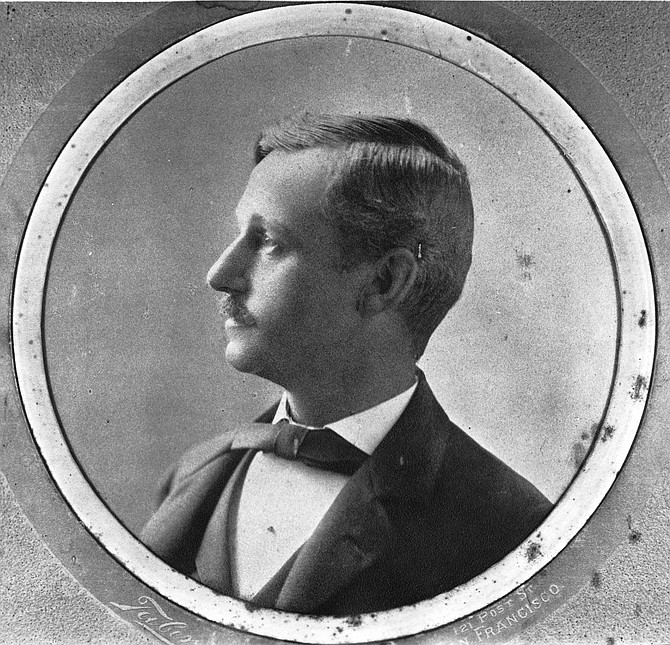 Facebook
Facebook
 X
X
 Instagram
Instagram
 TikTok
TikTok
 Youtube
Youtube

In 1835, as he sailed up and down the Alta California coast on the Pilgrim, 19-year-old Richard Henry Dana, Jr., described the peninsula-island, on the western shore of San Diego Bay, as “low, green, but without trees.”
It’s not clear how Don Pedro C. Cariilo got the land. When he married Josefa Bandini, either her father, Juan, gave it to them as a gift, or Don Pio Pico, Constitutional Governor of the Department of California, made the donation. In any event, Carillo received a deed for the peninsula on May 15, 1846.
One morning, he rode his horse south, from the shanty “pueblo” of San Diego — one-story adobe buildings with whitewashed walls—around the southern shore of the bay. “The beach bordering the Pacific Ocean offered him a smooth path northward,” and he rode along a “crescent-shaped peninsula.”
The Don stopped his horse at a ridge, “about 50 feet above tidewater.” He surveyed his property and the territory beyond: high hills behind the town of San Diego, and, to the west, the steep headland called, in those days, Punto Loma.
To proclaim ownership of his two square leagues, Don Pedro performed symbolic gestures: “He pulled up the grass and broke the branches of shrubs on his property. After he had destroyed a small patch of vegetation, Don Pedro turned and threw a stone in each of the four cardinal directions. His act indicated that for the first time this land was separate from the public domain.”
Two months later — July 9, 1846 — Americans raised their flag at Yerba Buena (present-day San Francisco). Although Alta California citizens urged him to keep the land, in spite of the change, Carrillo talked with wife Josefa about selling, moving to Los Angeles, and pursuing a career in law. On October 20, 1846, Carrillo transferred all the land that forms the port of San Diego, to where it joins the land of Santiago Emigdes Arguello. “He evidently did not think too highly of the property.”
In 1885, members of a “peninsula syndicate,” hoping San Diego would become the terminus of a transcontinental railroad, envisioned the island-peninsula as a tourist haven, including:
MASTER'S THESIS EXCERPTS:


In 1835, as he sailed up and down the Alta California coast on the Pilgrim, 19-year-old Richard Henry Dana, Jr., described the peninsula-island, on the western shore of San Diego Bay, as “low, green, but without trees.”
It’s not clear how Don Pedro C. Cariilo got the land. When he married Josefa Bandini, either her father, Juan, gave it to them as a gift, or Don Pio Pico, Constitutional Governor of the Department of California, made the donation. In any event, Carillo received a deed for the peninsula on May 15, 1846.
One morning, he rode his horse south, from the shanty “pueblo” of San Diego — one-story adobe buildings with whitewashed walls—around the southern shore of the bay. “The beach bordering the Pacific Ocean offered him a smooth path northward,” and he rode along a “crescent-shaped peninsula.”
The Don stopped his horse at a ridge, “about 50 feet above tidewater.” He surveyed his property and the territory beyond: high hills behind the town of San Diego, and, to the west, the steep headland called, in those days, Punto Loma.
To proclaim ownership of his two square leagues, Don Pedro performed symbolic gestures: “He pulled up the grass and broke the branches of shrubs on his property. After he had destroyed a small patch of vegetation, Don Pedro turned and threw a stone in each of the four cardinal directions. His act indicated that for the first time this land was separate from the public domain.”
Two months later — July 9, 1846 — Americans raised their flag at Yerba Buena (present-day San Francisco). Although Alta California citizens urged him to keep the land, in spite of the change, Carrillo talked with wife Josefa about selling, moving to Los Angeles, and pursuing a career in law. On October 20, 1846, Carrillo transferred all the land that forms the port of San Diego, to where it joins the land of Santiago Emigdes Arguello. “He evidently did not think too highly of the property.”
In 1885, members of a “peninsula syndicate,” hoping San Diego would become the terminus of a transcontinental railroad, envisioned the island-peninsula as a tourist haven, including:
MASTER'S THESIS EXCERPTS: